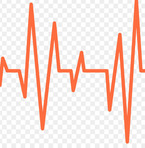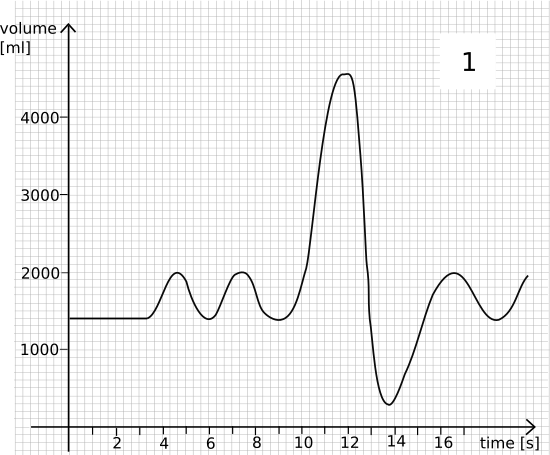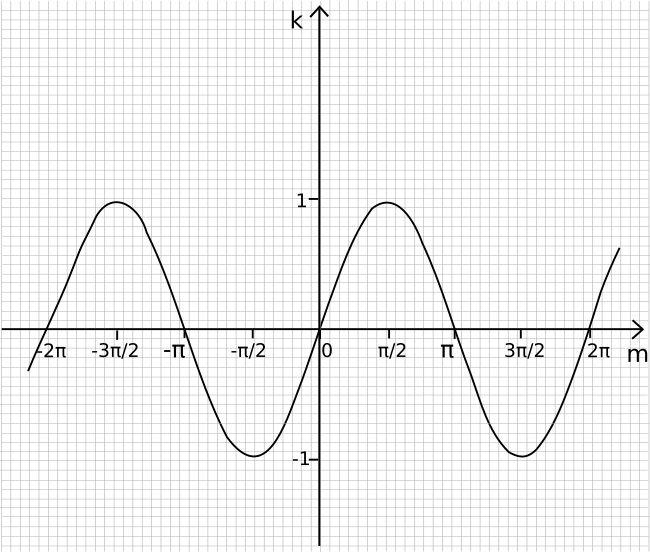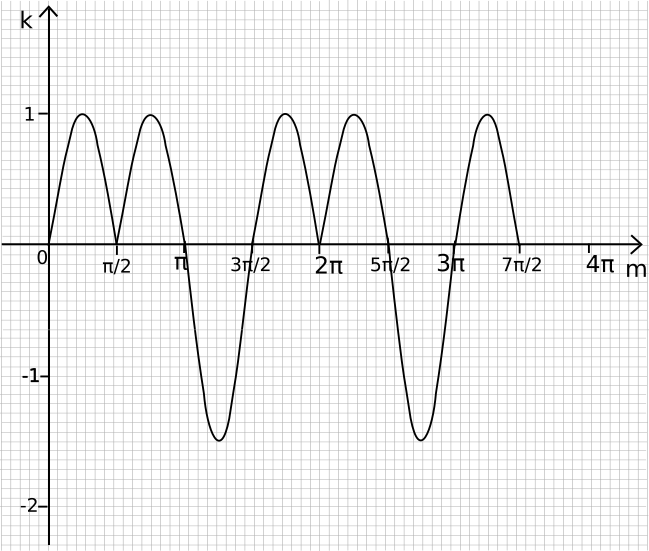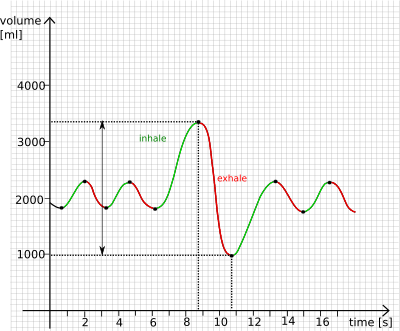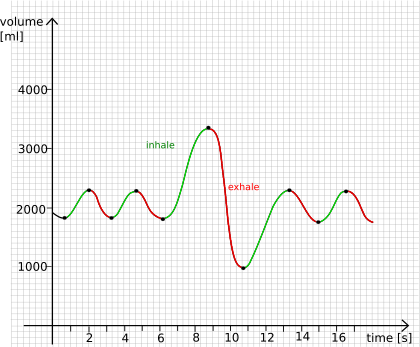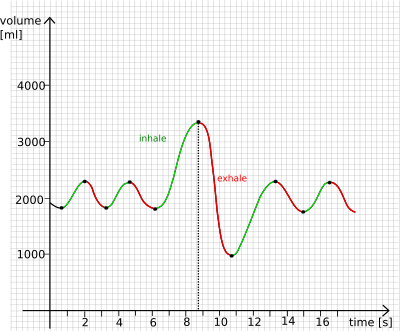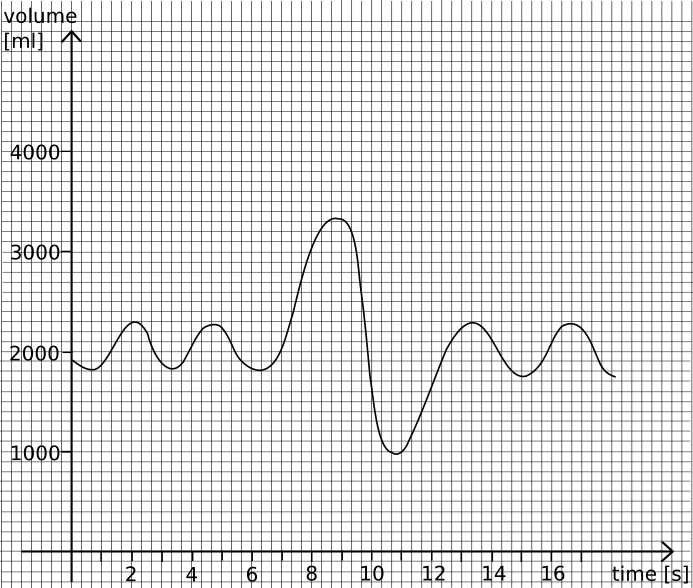A play time - part I
The next tasks prepare you (or remind you) school tasks related to the functions and its graphs.
Do not worry about its difficulty!! If you successfully passed problems in the previous chapter ( Spirometry Curve ) it will be easy for you ;)
task I: Spirometry game
Medical students had a good time when they tryed a spirometry assessment at school:
Finn:
"I did not breath at the beginning of the assessment for 3 seconds!"
Matias:
"I inhaled deeply before we started so I had an opportunity to exhale deeply exactly at the beginning of the assessment!"
Sophi:
"I stopped breathing for a while after every inhalation!"
Hana:
"It is not possible to measure Vital Capacity based on my spirometry result!"
The table of answers
| Answer | F1, M2, S3, H4 | F1, M4, S3, H2 | F4, M3, S2, H1 | F1, M2, S4, H3 |
|---|---|---|---|---|
| code/cipher | INEWTON | GFBRIEMAN | LEULER | GWLEIBNIZ |
task II: Truth - yes or no?
After the spirometry assessment our students (Finn, Matias, Sophi and Hana) got another task. They had to find volume of an air inhaled during their normal breathing.
After a while Sophi said: "It is very interesting! The result does not change if I move the graph of the spirometry curve across the paper. For example, like this!" (look on the right graph)
Is Sophi true?
What is the volume of an inhaled air in Sophi's example?
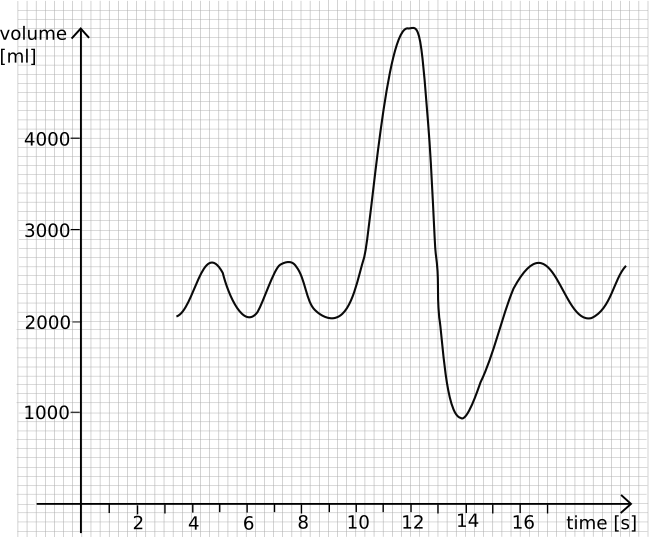
The table of answers
| Answer | Yes, Sophi is true. The volume of the normally inhaled air is approximately 600 ml | No, Sophi is not true | We do not know | Yes, Sophi is true. The volume of the normally inhaled air is approximately 200 ml |
|---|---|---|---|---|
| code/cipher | ... | ... | ... | ... |
task III: Frequency - the number of repetitions
The last task of our students was to find a breathing frequency (the number of repetitions of a normal inhalation and exhalation cycles in one minute). They worked with a spirometry curve drawn on the right picture.
Which is the correct answer?
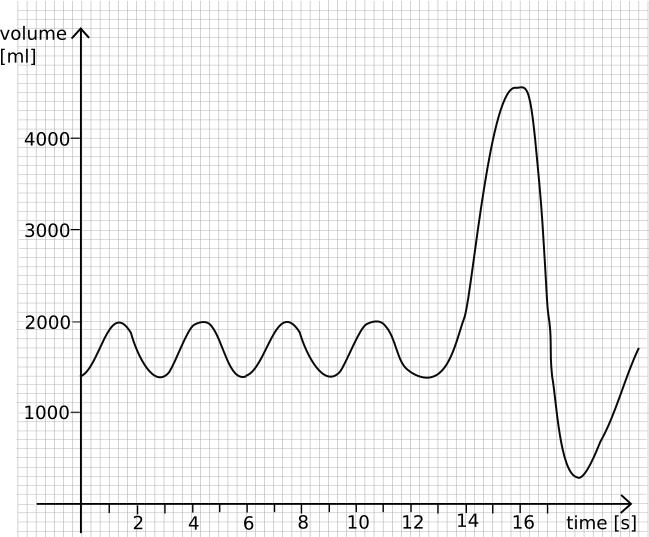
The table of answers
| Answer | It is not possible to find the answer because we do not have the record of breading for the whole minute | 12 | 20 | 40 |
|---|---|---|---|---|
| code/cipher | ... | ... | ... | ... |
task IV: A little bit of "pure" maths
The next task has two alternatives. Do you know a sinus function? If no, pick up the first alternative . If you already know it, the first alternative could not be interesting for you a from that reason we prepared the second alternative for you.
If you want, you can both variants! In this way you can check the accuracy of your your answer :).





